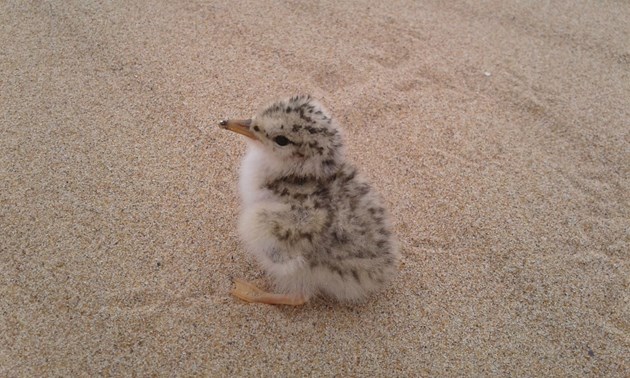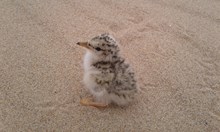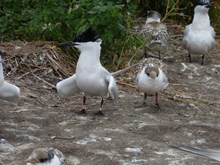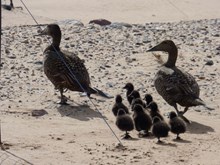21 December, 2021
Celebrating success at the North-East’s National Nature Reserves

NatureScot’s National Nature Reserves (NNRs) in the north-east celebrated some great success stories in 2021, including a solid season for the tern colony at Forvie NNR.
The breeding terns at Forvie are of international importance and each year the reserve is carefully managed with closed areas and fencing to help protect the birds from disturbance and predation.
This year efforts paid off with the successful fledging of two Little Tern chicks – the first since 2018. The species is on the edge in the UK as a whole, as a result of factors such as poor weather and predation.
Sandwich Terns at the reserve had a successful season with 1,075 pairs breeding and at least 481 young fledged. The breeding pairs represent around 9% of the entire UK breeding population so the colony is of national importance.
Meanwhile in the Arctic and Common Tern colony a total of 1,124 pairs bred with at least 195 young fledged, of which around 91% were Arctic and 9% Common terns.
The reserve’s Eider population also had a successful year with 167 young fledged, the best result for this species there since 2003, while the relatively small Kittiwake colony recorded the strongest count for 20 years with around 550 pairs.
NatureScot Reserve Officer Daryl Short said: “Little Terns struggle most years and 2018 was the last year any chicks fledged here. They often fail due to poor weather and predation, in our case a local Oystercatcher specialising in eating the eggs.
“This year we mitigated for this with additional fencing and saw a much improved hatching rate, so while two chicks might seem like a low figure, it was a relief to see some success for this species.
“Interestingly this year we’ve had a few water vole sightings at the Coastguard’s pool, which would suggest these are returning. The species was eradicated by American mink in many areas and are now coming back after concerted efforts to eradicate mink in river catchments such as the Ythan.”
Elsewhere at Muir of Dinnet NNR, work has been taking place to upgrade the path on the Kinord north shoreline, which will improve access while protecting more sensitive areas from disturbance.
The reserve experienced its biggest ever Redwing fall in October, with up to 3,000 of these winter visitors dropping by to guzzle rowan berries.
Two bizarre records of sea ducks were also recorded this autumn - of Long-tailed duck and Velvet Scoter. It’s likely these unusual visitors were storm-driven refugees, pushed a long way inland and resting up on the first water they found.
NatureScot Chief Executive Francesca Osowska said: “In the year that brought COP26 to Glasgow and focussed the world’s attention on the twin crises of nature loss and climate change, it’s really heartening to reflect on the great work taking place across our National Nature Reserves. As we head into 2022, it’s fantastic to see these efforts yielding such positive results for nature and for people.
“This year has been another challenging one for many. Throughout the ongoing pandemic our beautiful reserves have helped people to enjoy spending time out of doors and connect with nature, and we want to thank everyone who helped us to safeguard these special places for future generations by treading lightly on their visit.
“Despite the season there’s still much to see so we’d encourage people to get out and enjoy their local national nature reserves over the holiday season and beyond.”
ENDS
Contact information
- Name
- NatureScot Media
- Telephone
- 0131 316 2655
- media@nature.scot
NatureScot is Scotland's nature agency. We work to enhance our natural environment in Scotland and inspire everyone to care more about it. Our priority is a nature-rich future for Scotland and an effective response to the climate emergency. For more information, visit our website at www.nature.scot or follow us on X at https://x.com/NatureScot
’S e NatureScot buidheann nàdair na h-Alba. Bidh sinn a’ neartachadh àrainneachd na h-Alba agus a’ brosnachadh dhaoine gu barrachd suim a chur ann an nàdar. Tha e mar phrìomhachas againn gum bi nàdar na h-Alba beairteach agus gun dèilig sinn gu h-èifeachdach le èiginn na gnàth-shìde. Tha an tuilleadh fiosrachaidh aig www.nature.scot no air X aig https://x.com/NatureScot




